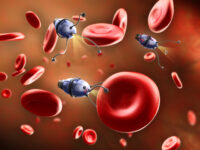When a doctor calls time of death on a 35-year-old female lying motionless on a stretcher, it is usually definite. He has watched the patient’s vital functions slowly cease, giving him the needed certainty to call the time at which physiologic death has occurred. These types of cases, where death occurs in the presence of a skilled medical professional, are the only circumstance in which time of death is absolutely accurate. However, this is not very often the real-life scenario. In circumstances where death is not directly observed, determining the cause and time is much more involved and often includes a medical examiner or coroner conducting autopsies. Time and cause of death are not only critical factors in criminal investigations, but also in many civil situations for legal purposes, such as those dealing with disputes over life and accident insurance. Despite their importance, approximately 30 percent of cases in forensic medicine cannot be solved because of an unclear cause and time of death, even after an autopsy is performed. This is where a surprising tool, the pacemaker, has proven to be advantageous.
This is where a surprising tool, the pacemaker, has proven to be advantageous.
Pacemakers are small medical devices that are inserted into a patient’s chest or abdomen in order to regulate arrhythmias, or abnormal heart rhythms. They provide a variety of functions, such as speeding up a slow heart beat, controlling a fast heart beat, and coordinating electric signals between ventricles. Not only does a pacemaker function in aiding a heart patient’s lifestyle, but it has now been shown to possess the ability to go beyond just healthcare and actually help determine an accurate time of death of a deceased individual.
A study published in 2017 pulled data from 150 autopsies conducted at the Medical University of Berlin for patients who had used cardiac implantable devices at the time of their death, such as pacemakers and implantable cardioverter-defibrillators. Within this cohort, about a quarter were cases in which time of death was unable to be determined from the standard tests and procedures that normally suffice, such as an autopsy. This prompted researchers to focus on cardiac device interrogation, a step that’s not routinely performed. Astonishingly, they found that in 76 percent of the cases they did this for, time of death was able to be determined using data from the device.
The way that a cardiac device can function as a tool in time of death determination is contingent upon whether or not the patient died from a type of heart irregularity. For example, if the individual died from tachycardia, which is a rapid heartbeat, this would show up on the device. Another instance highlighted in the study was one in which, while the pacemaker did not possess the ability to reverse a lethal ventricular fibrillation, it was able to record the time it had occurred. In addition, researchers were also able to investigate instances when a cardiac device malfunctioned, potentially preventing it from saving the individual from cardiac-related death.
Astonishingly, they found that in 76 percent of the cases they did this for, time of death was able to be determined using data from the device.
Ultimately, the study saw that the addition of device interrogation resulted in a decrease in cases that had unclear times of death, going from an estimated 30 percent to a range of 10 to 20 percent. Dr. Philip Lacour, the head researcher, promptly concluded that the team believed that “device interrogation should be routinely performed in all autopsy cases.” He highlighted that this routine would not only clarify uncertain times of death, but could also catch malfunctions in cardiac devices that need to be underscored.
The connection between pacemakers and medicolegal investigations may be surprising, but the impact could mean the uncovering of unsolved criminal cases or the end of long legal insurance disputes. It’s the shared common end goals of justice and closure for both medicine and forensics that make discoveries that intertwine the two appealing and satisfying to research. In the future, there may be an even larger number of scientific tools created that can help aid in crime investigation.
Sources: 1 // 2 // 3 // 4 // 5 // 6
Image Source: Wikimedia Commons



